Probably the last (for now at least) addition to the 486 at 180MHz - an exercise in practicality investigation.
PC-Chips M919 V3.4B/F - last revision of a long line of infamous motherboards.
There is plenty of information online about it but not much about its performance qualities.
So, let's see how this guy does perf-wise.
Used this one for the tests:
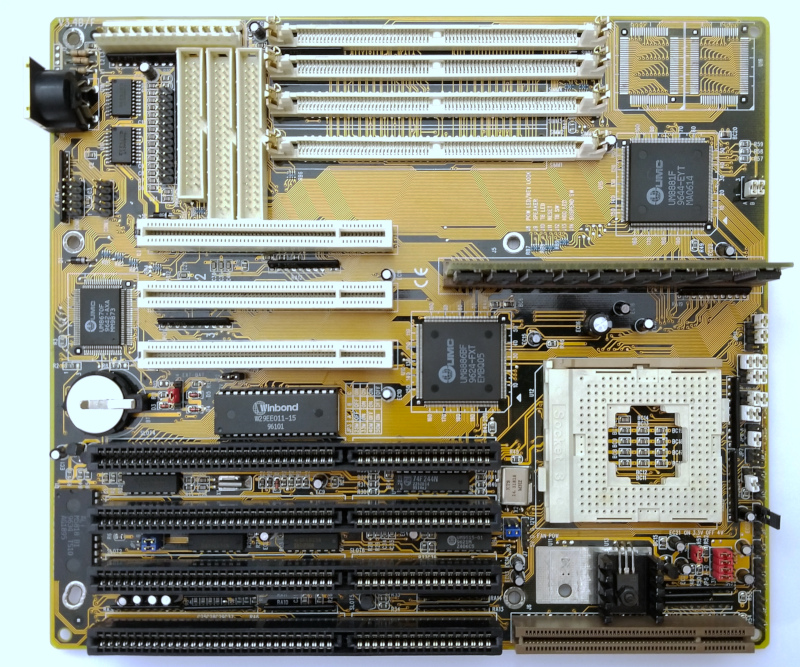
There is another one still in the original box + cables, booklet and Am5x86 133-ADW CPU.
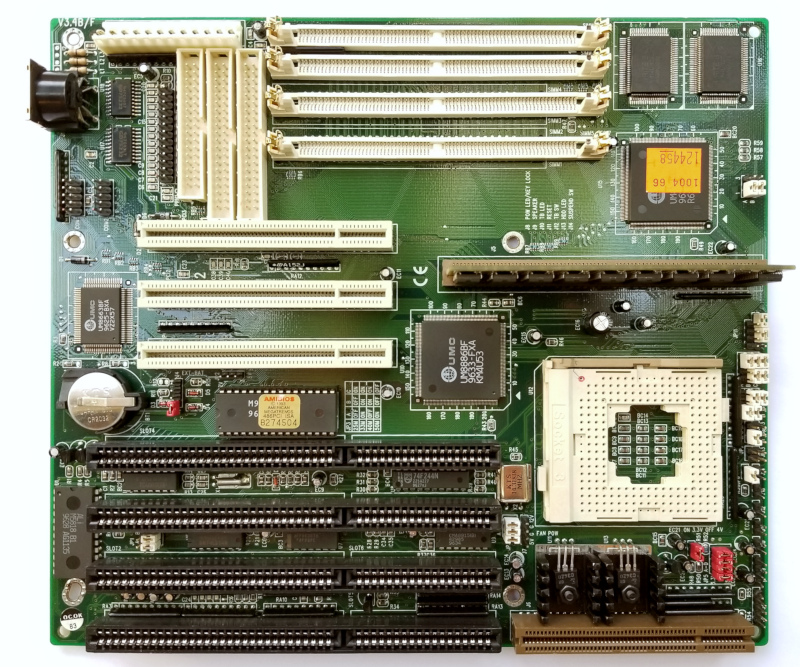
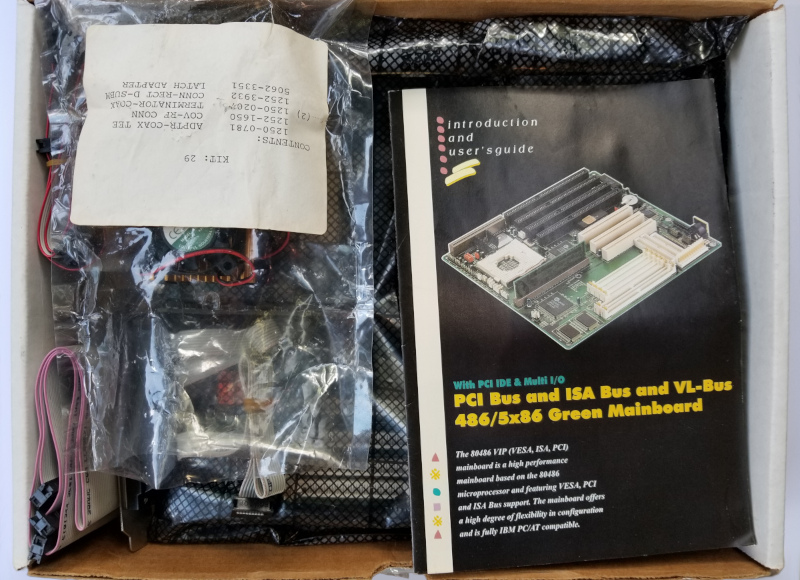
Supports all Socket 3 CPUs of its time. A bit convoluted jumper setup.
ADZ CPU models require 4V, while ADW do just fine with 3.3V.
Noticed that some motherboards have such "requirements", while others handle both CPU types at 3.3/3.45 no problem.
UMC UM8881F-EYT/UM8886BF-FXT chipset.
Custom 256Kb L2 cache module with 15ns rated chips. Frees space on the PCB, but upgrades are difficult.
L2 cache is used in WT mode. Performance is same or faster than WB, depends on which test you ask. This is the norm for most 486 motherboards. Only some rare exemplars such as Asus PVI handle WB properly.
Supports EDO RAM.
For some reason performance suffers if exactly 64Mb memory is installed, but fine with any other number. This is confirmed by other users later in the thread.
Tested with 32Mb 60ns module. (EDIT: 2 years later - additional testing with 128Mb was performed as well while assisting somebody to figure out issues with his M919.)
Favors PCI over VLB which is in line with most PCI/VLB hybrid implementations based on that UMC chipset. Didn't like ARK1000VL VLB video cards (best for DOS graphics). Used S3 Trio64 VLB instead, which is a hair behind in DOS, but does way better in Windows GUI.
Implicit bus divider. FSB over 40MHz causes it to automatically kick-in. This is remedied easily by POSTing with TURBO turned-off. Still annoying.
Latest BIOS 09/15/1998S.
The built-in IDE controller is not great.
Also, can hang sometimes (very rarely) upon soft reset with CF cards bigger than 8Gb. Hard reset fixes it.
Didn’t encounter this problem with smaller CF cards.
--- 200MHz (4x50 or 3x66)
Cannot get the system to DOS prompt reliably.
Tried hard with 2 different motherboards, different processors, memory modules, with and without L2 cache, different CPU voltages.
Feels like it is something on motherboard level.
--- 180MHz
All BIOS settings on max, but for complete stability the next 2 exceptions are needed:
CACHE SPEED OPTIONS 3-2-3 (best is 2-1-2)
DRAM READ WAIT STATE = 1 (best is 0)
The system can operate with L2 cache set to 2-1-2 and achieve better numbers, but is not stable.
This was already showcased in another thread by user CPUGalaxy.
Considered to eventually upgrade the cache module with 12 or 10 ns chips, especially if all other aspects of the boards were top notch ... but they were not, so didn't bother at the end.
Still, may get to it at some point later and update the post.
UMC IDE driver works with speed set to 17 (max is 18, undocumented) and MM0.
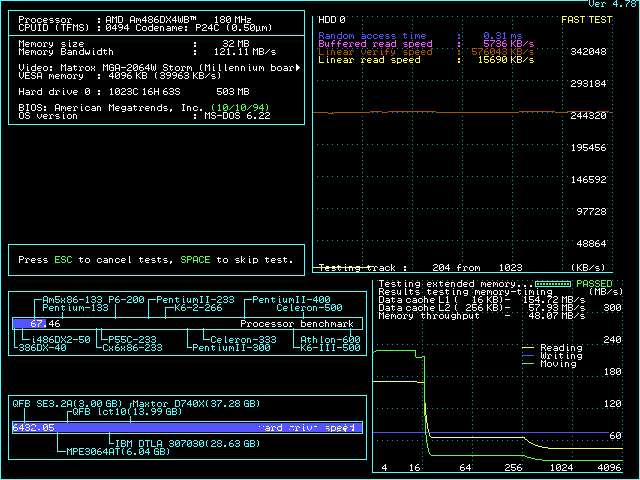
The usual set of benchmarks, compared to LuckyStar D and Biostar UUD.
Provided are results with both MGA PCI and S3 Trio64 VLB graphics adapters.
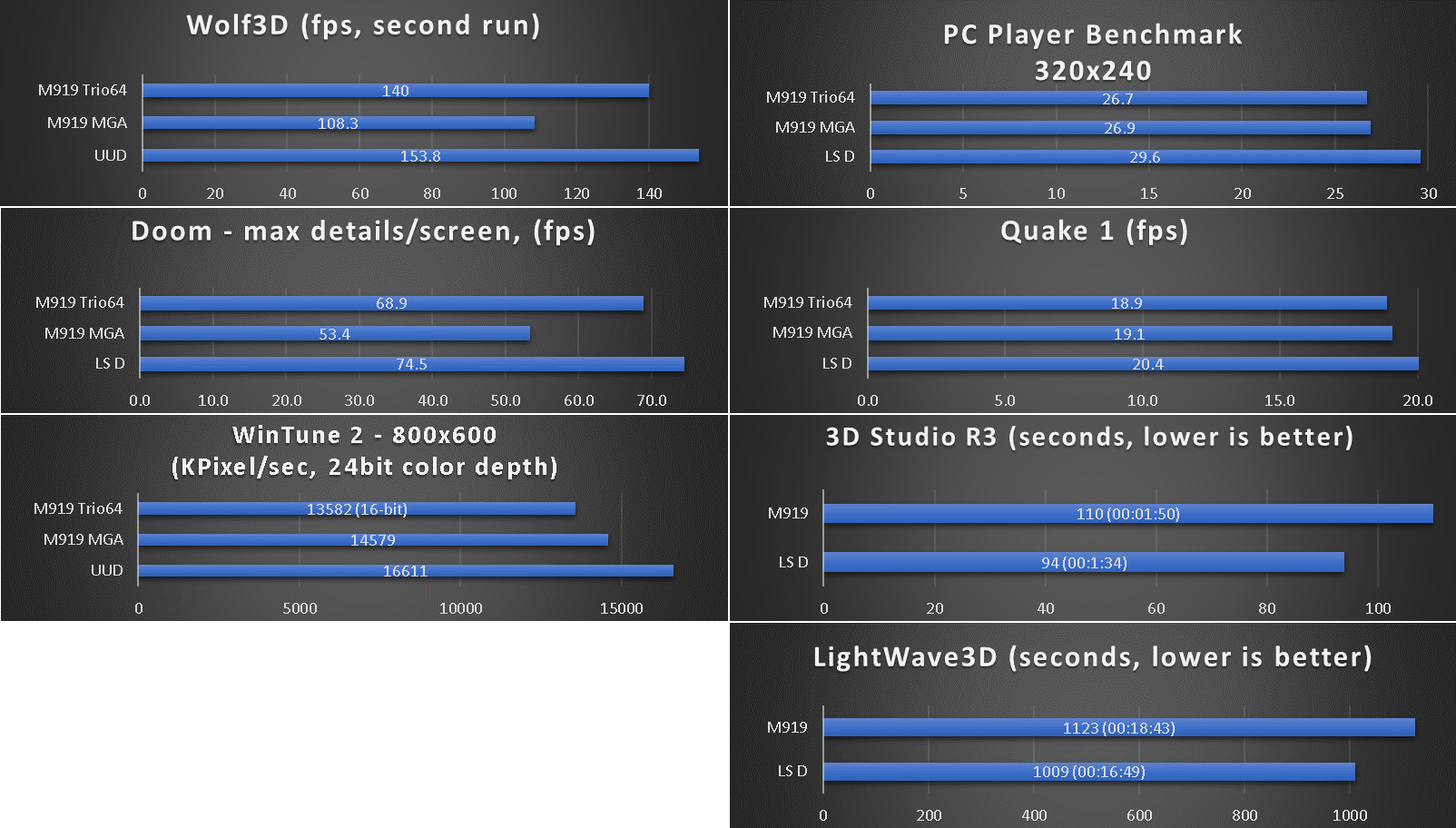
Obviously not the fastest motherboard out there.
Comes with too much baggage - implicit bus divider, limited RAM (or things get slow), IDE issues, basically non-upgradable L2 cache.
1024Kb L2 cache
Managed to obtain 1024Kb L2 cache module from a fellow Vogon user (he produced them).
It turns M919 into what looks like the best motherboard at 180MHz.
All BIOS settings on max except:
DRAM READ WAIT STATE = 1 (0 is best)
Basically, the faster rated chips of the new L2 cache module allow for CACHE SPEED OPTIONS to be set to 2-1-2.
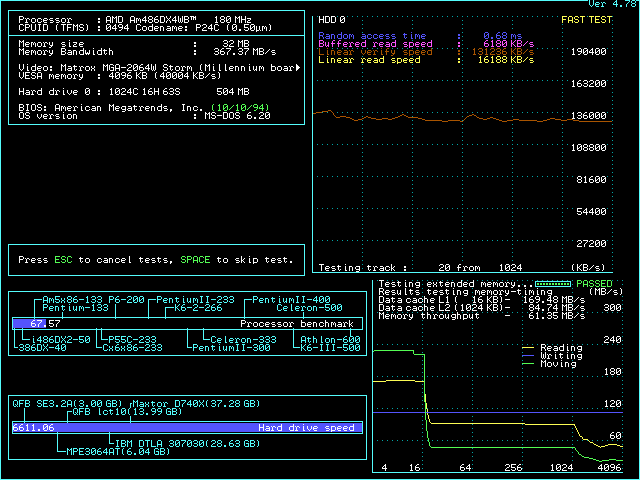
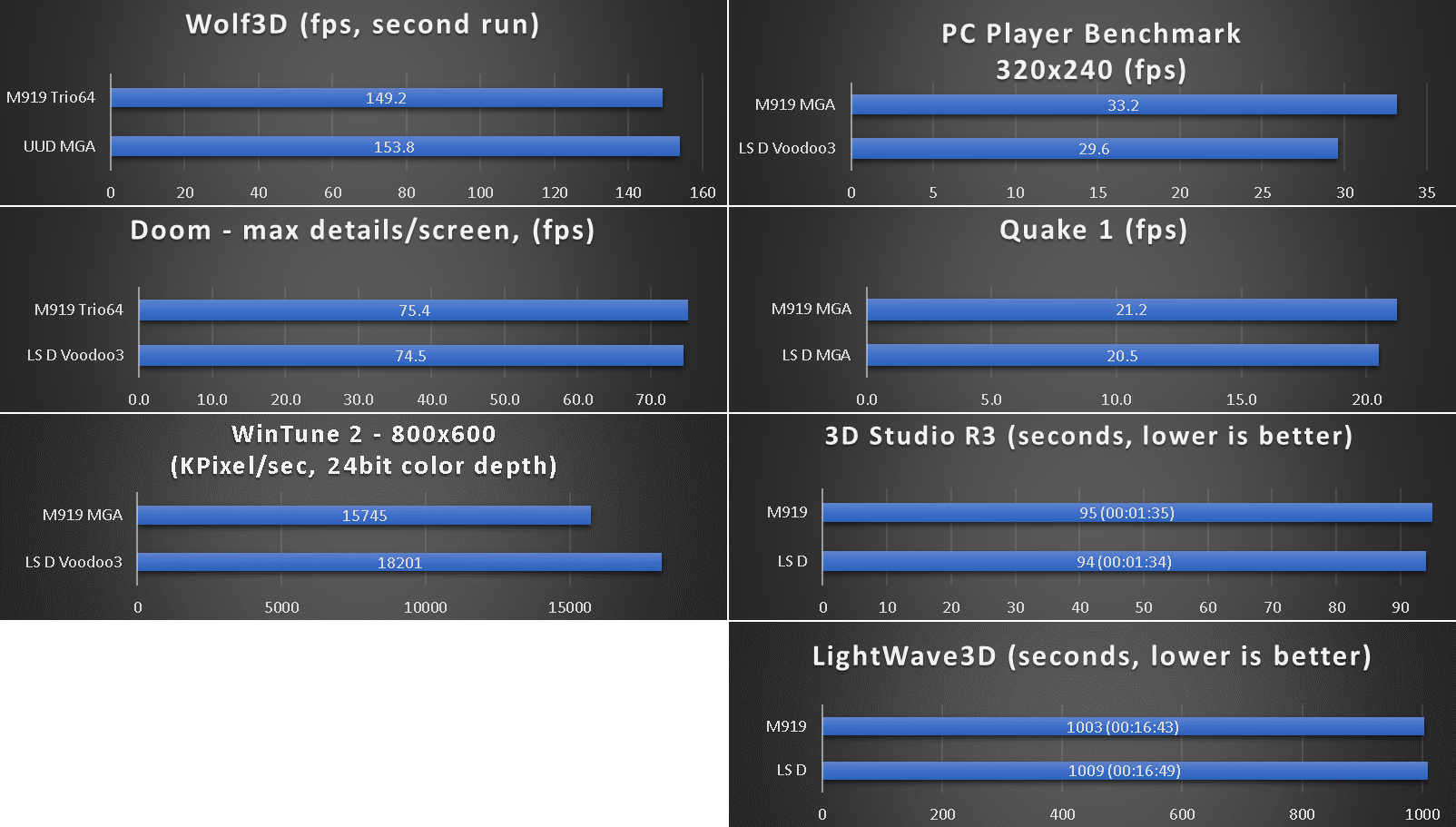
Very satisfying.
System is fully stable.
The fastest overall motherboard in the 180MHz category. Effortless. Just works.
Attention must be given to the automatic PCI bus divider - boot in 40MHz FSB then switch to 60MHz (pull one jumper).
The built-in IDE controller is a bit lacking compared to the other qualities of the system.
--- 160MHz with 1024Kb level 2 cache
All BIOS settings on max. Fully stable.
Speedsys (this is an old screenshot with 256Kb level 2 module):
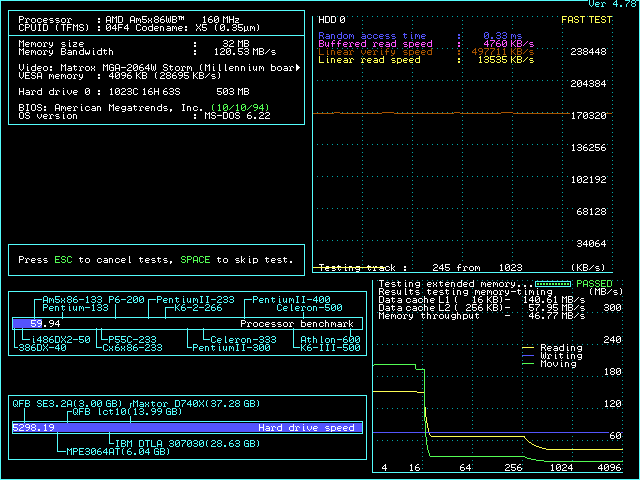
benchmark results
While performance gets a nice boost, the larger L2 cache buffer is still not enough for the board to outdo the rest.







